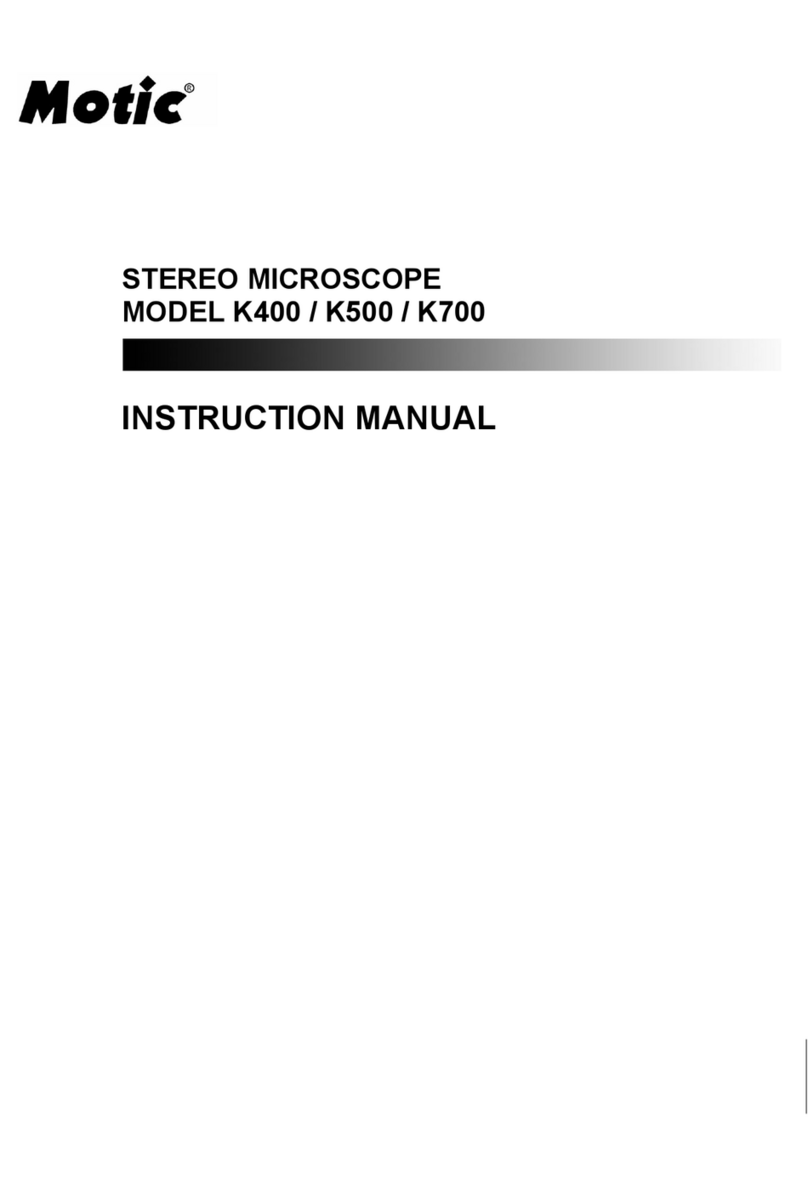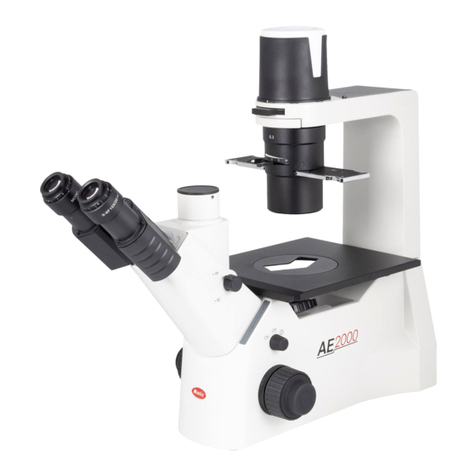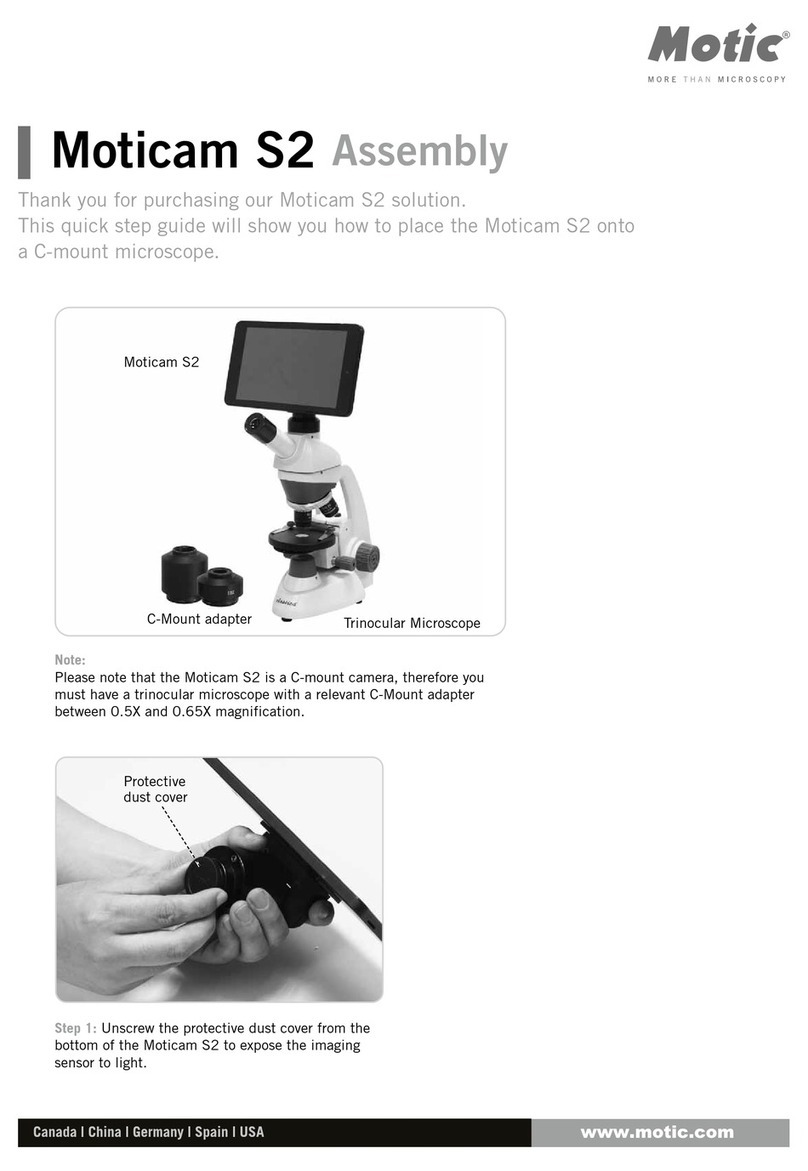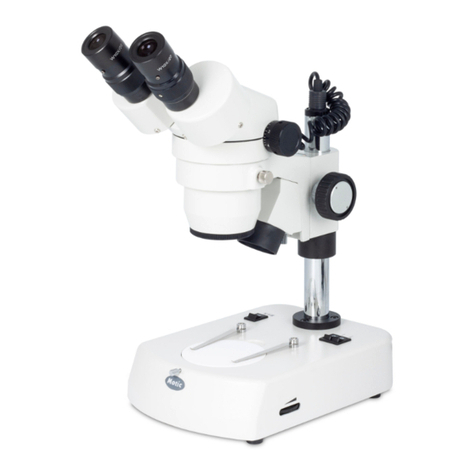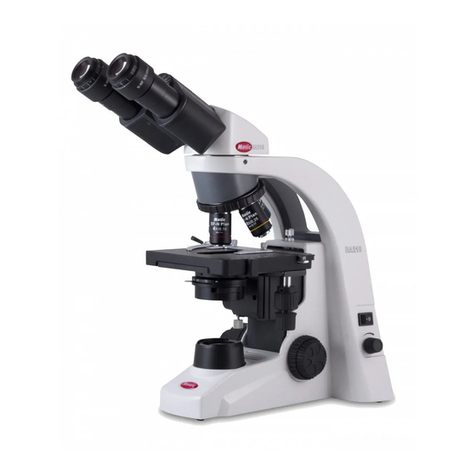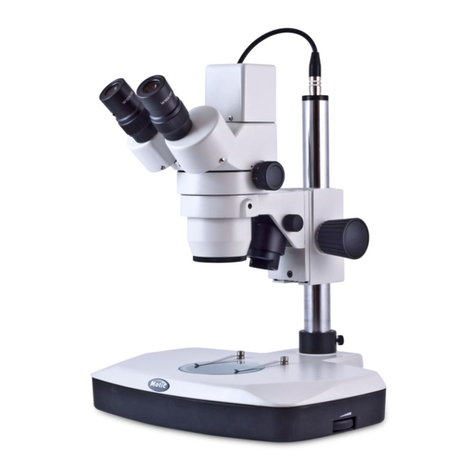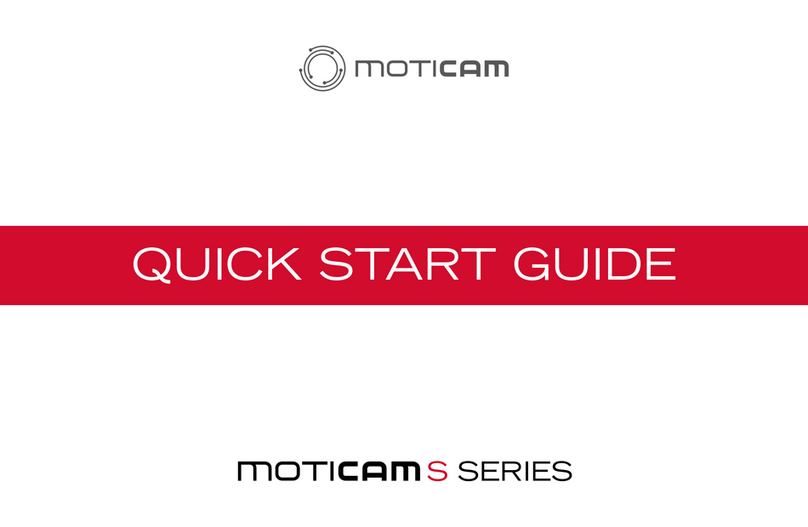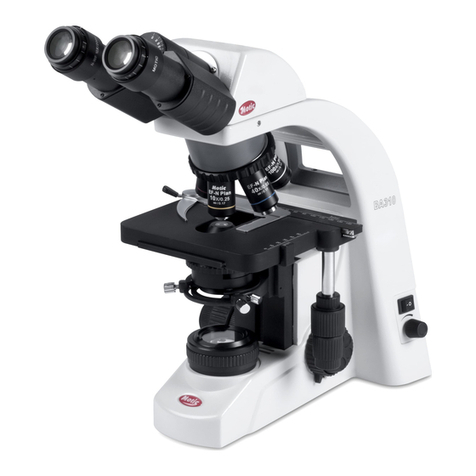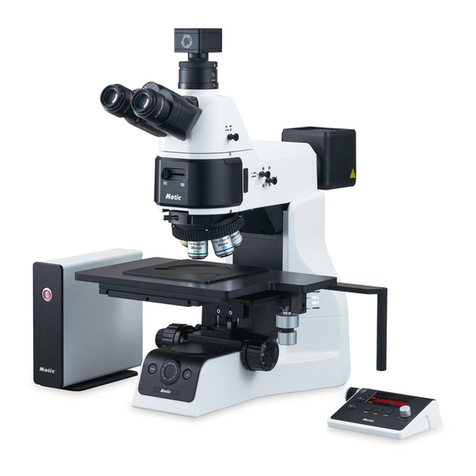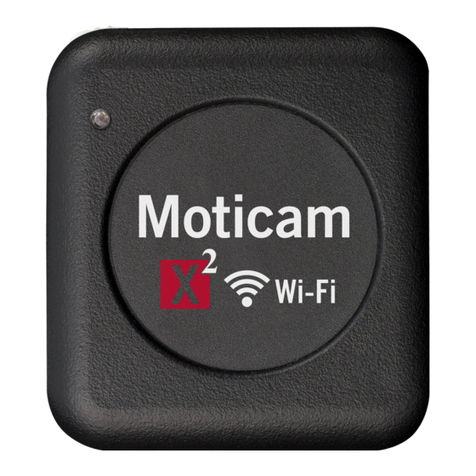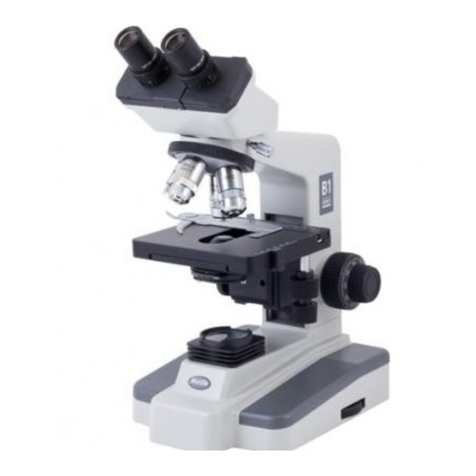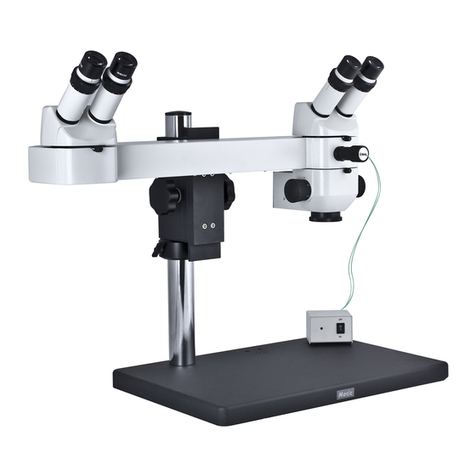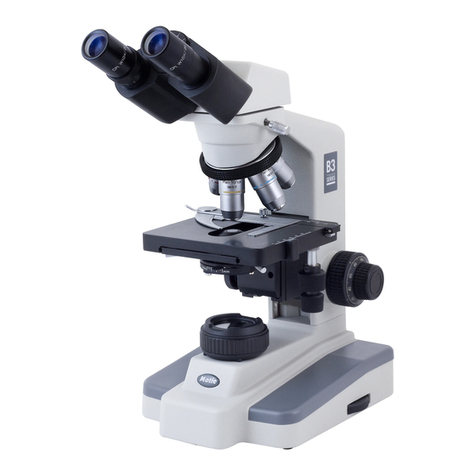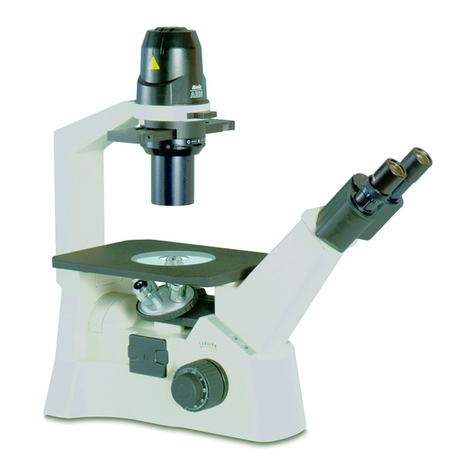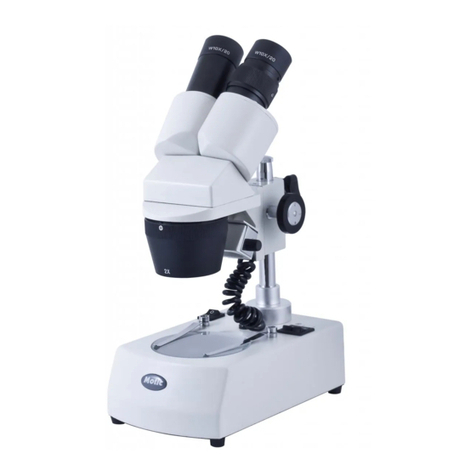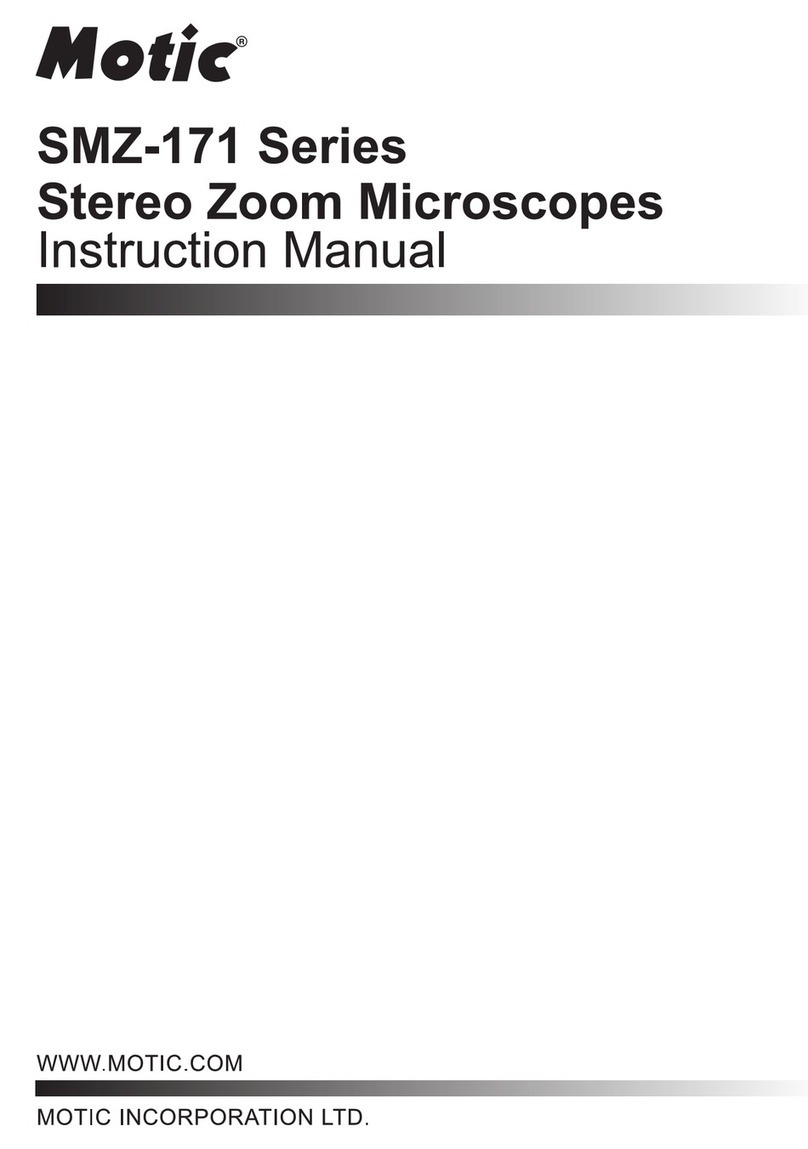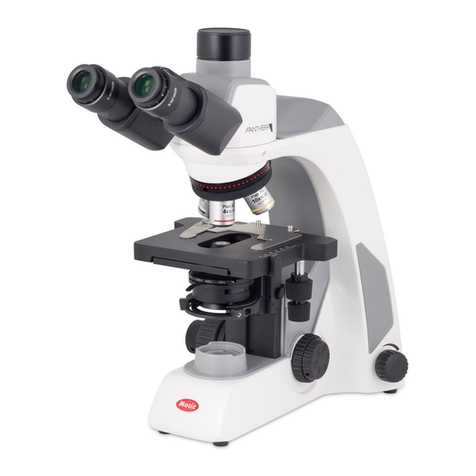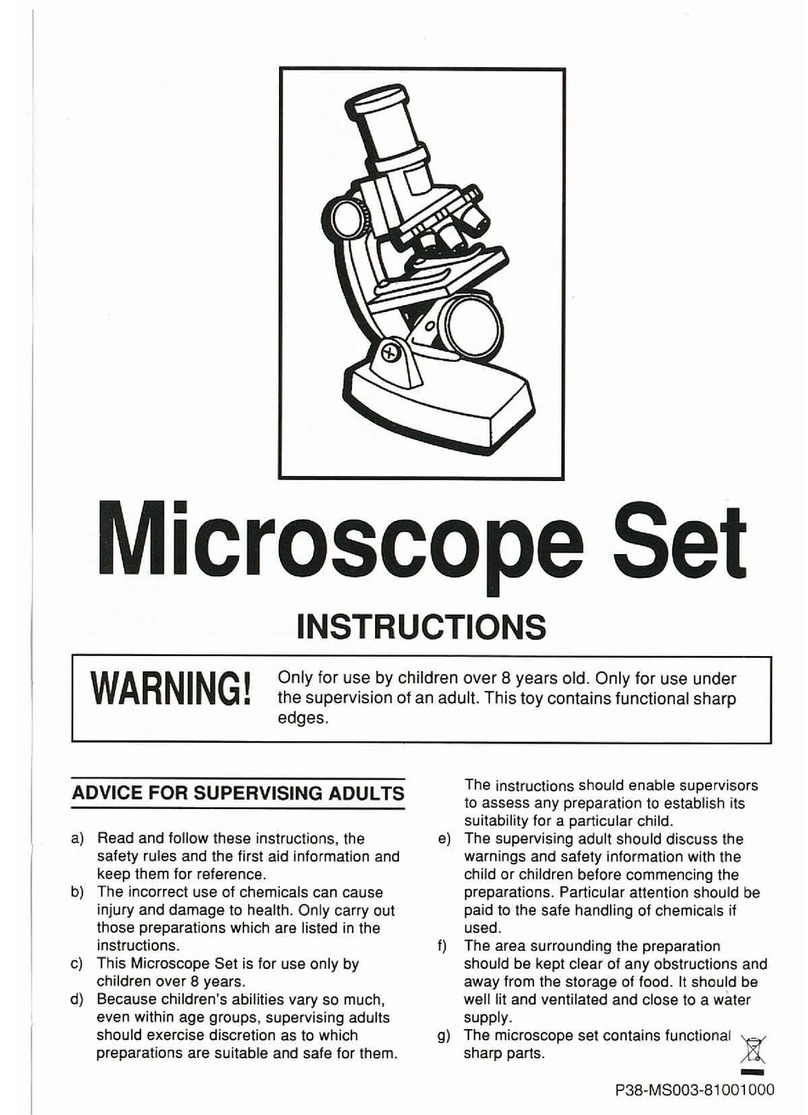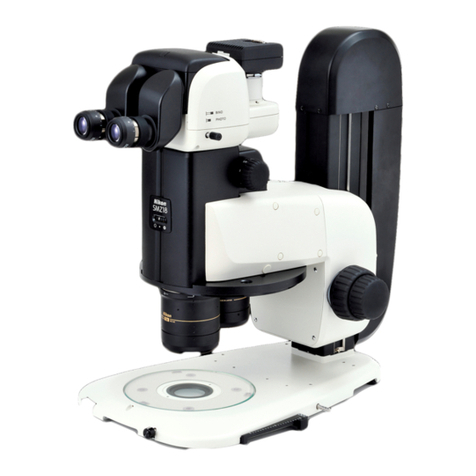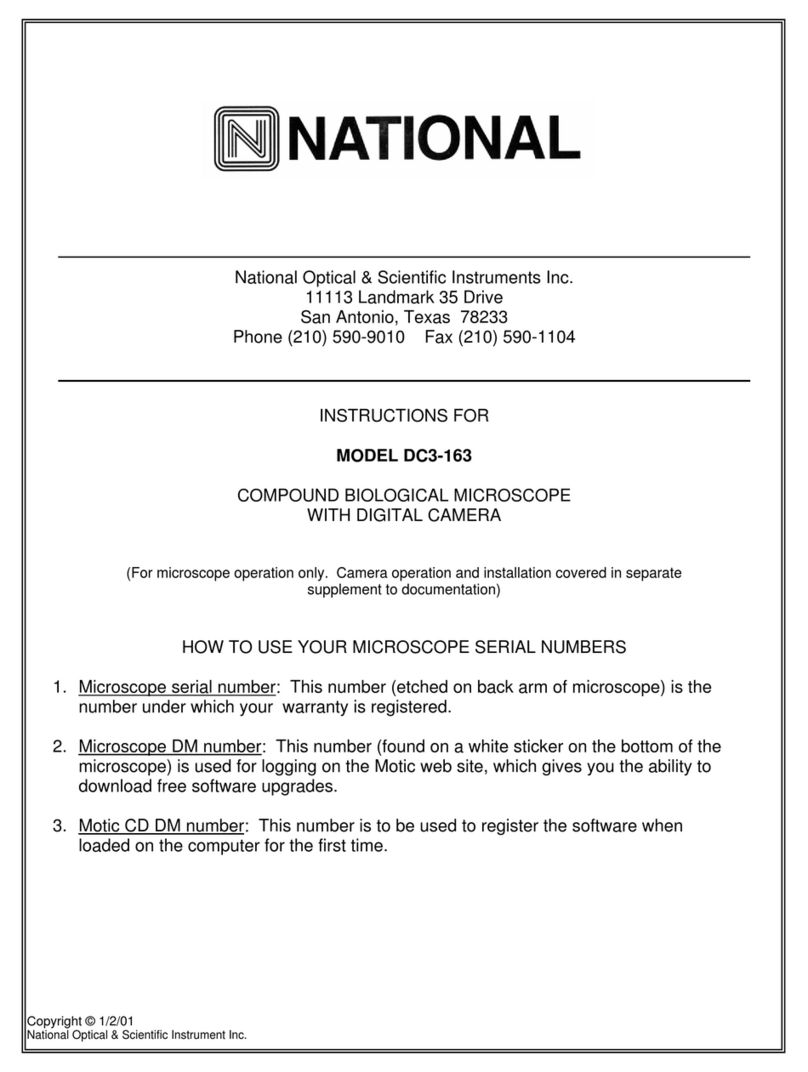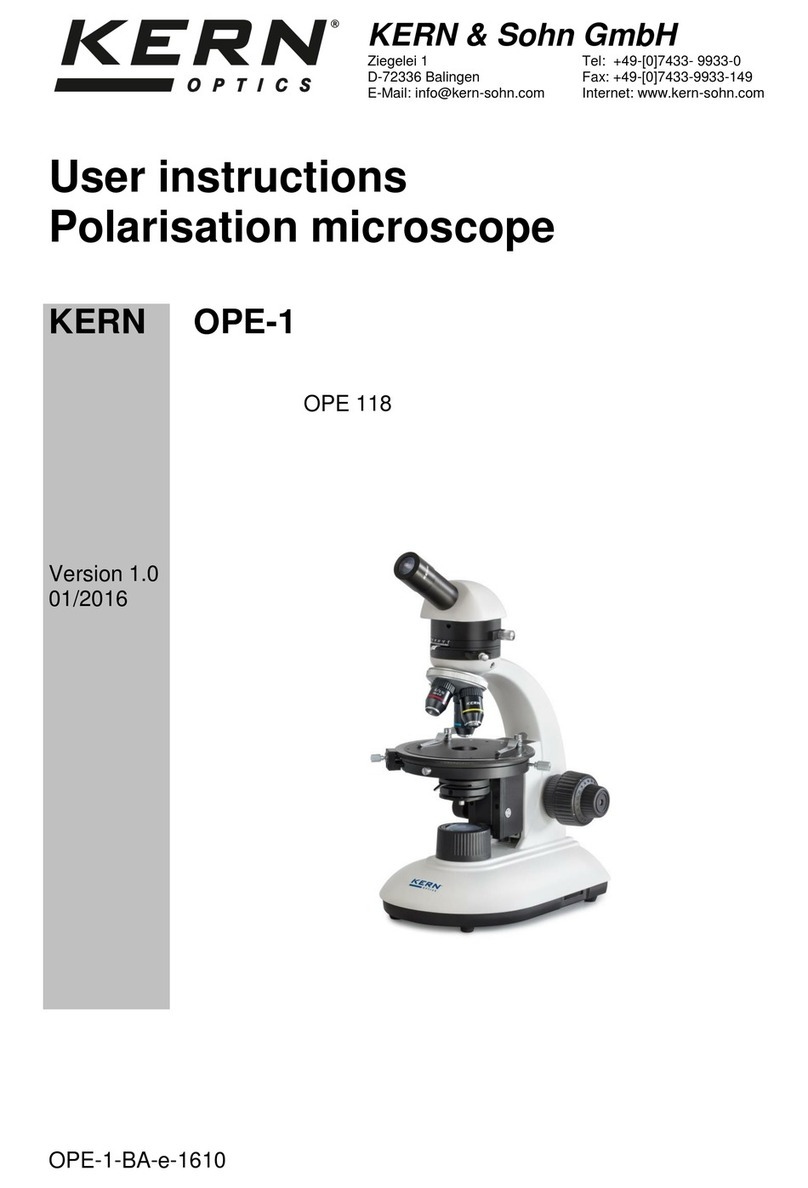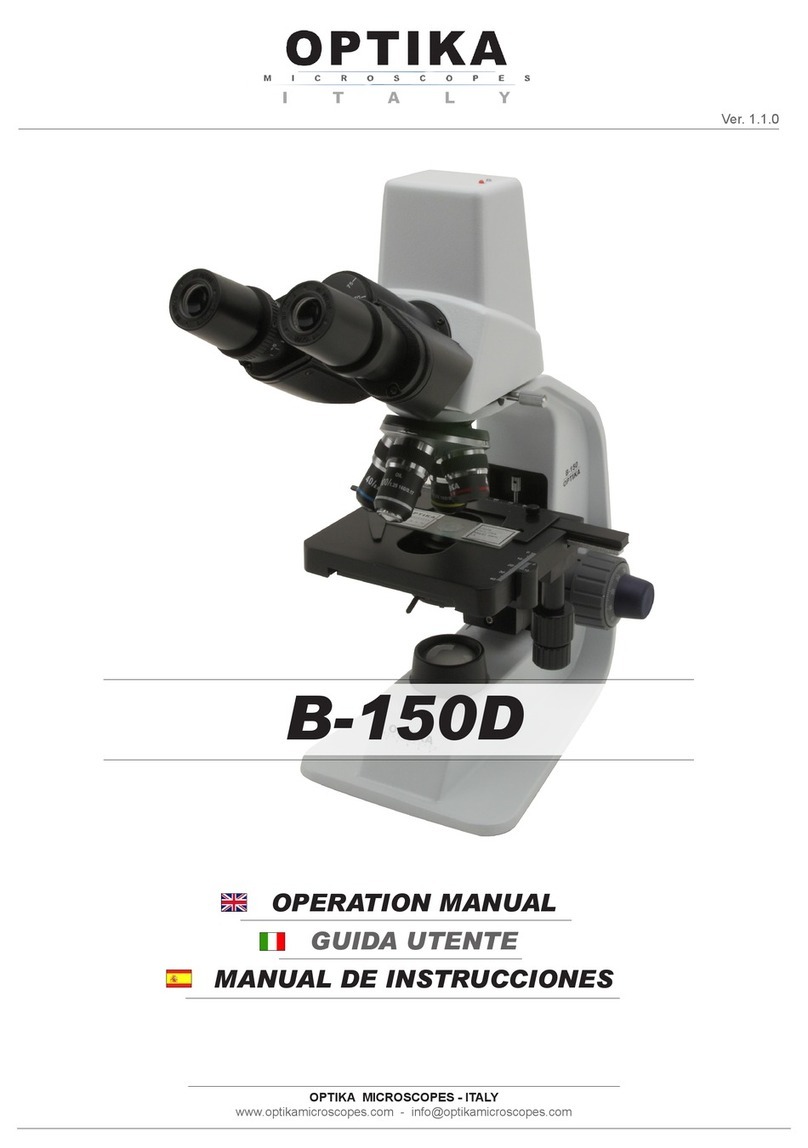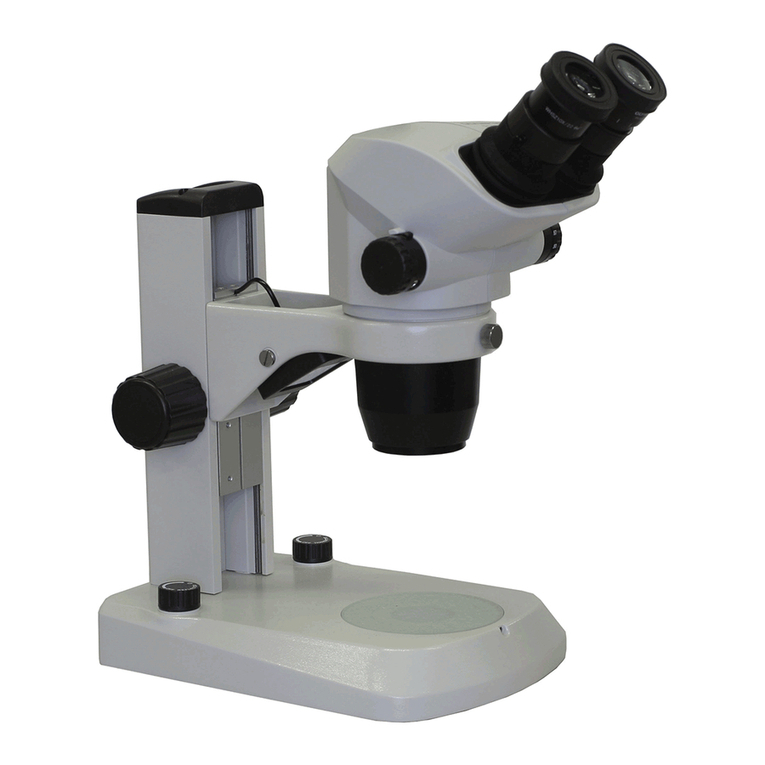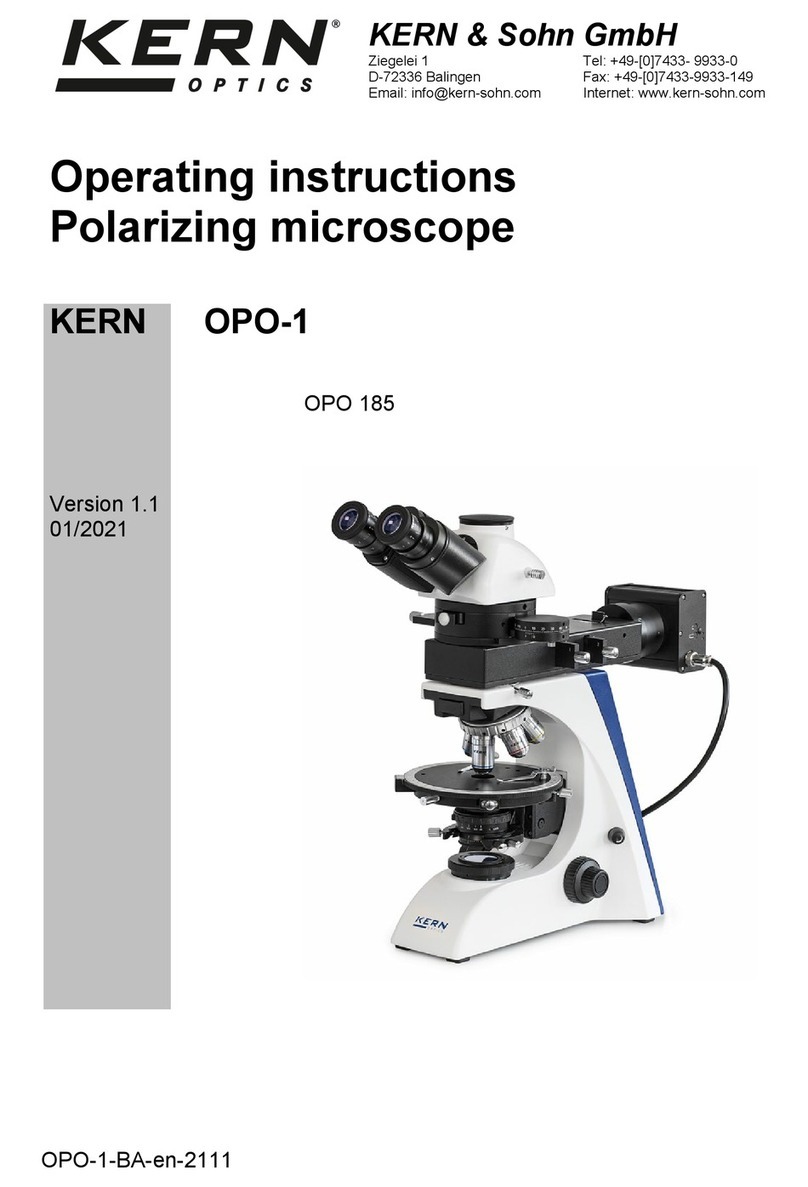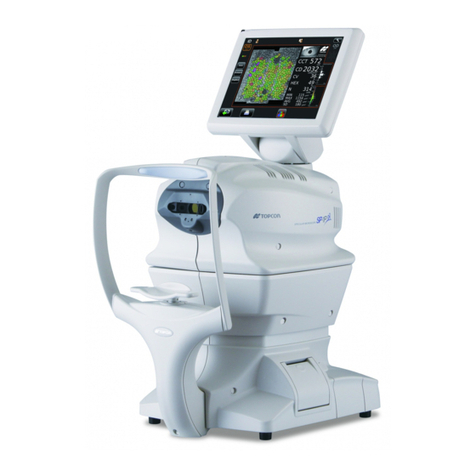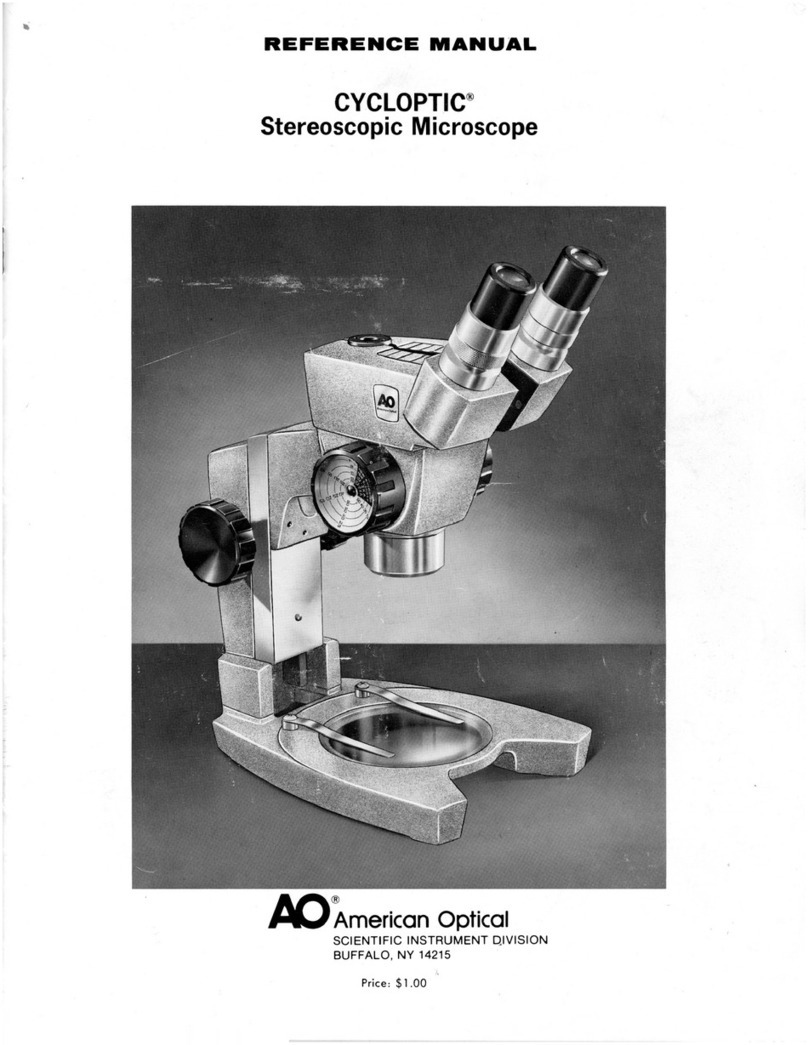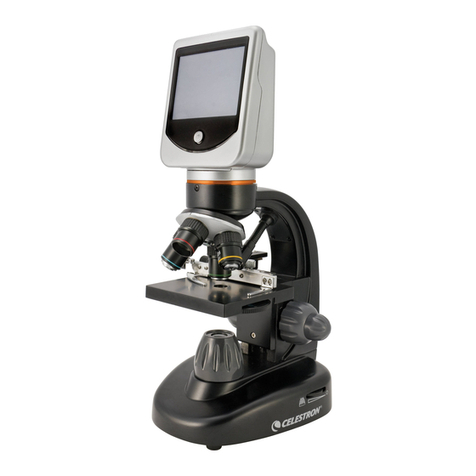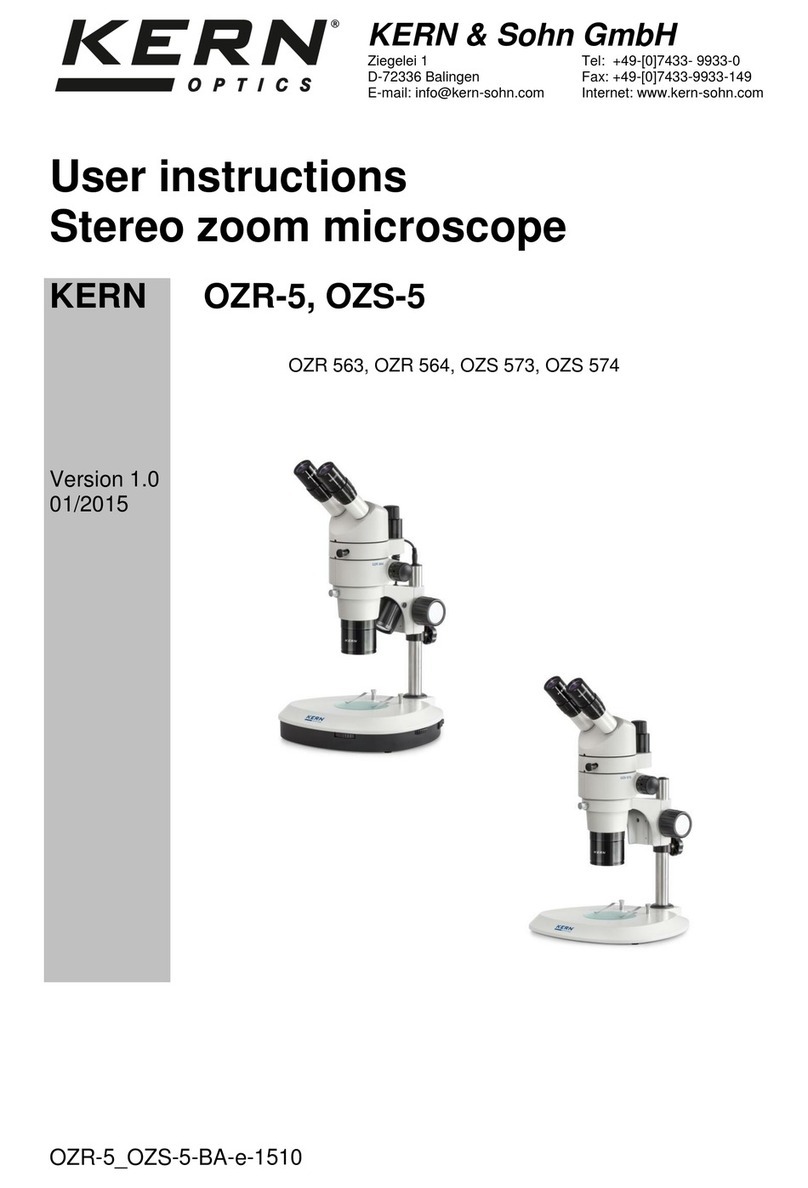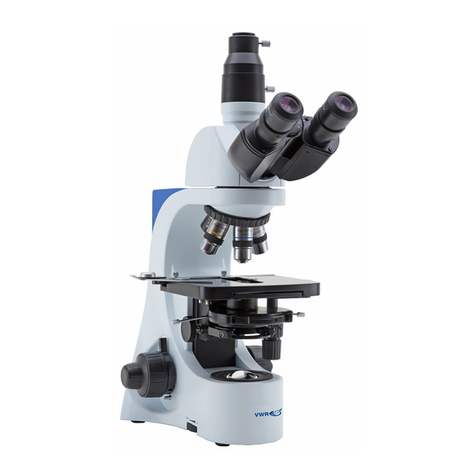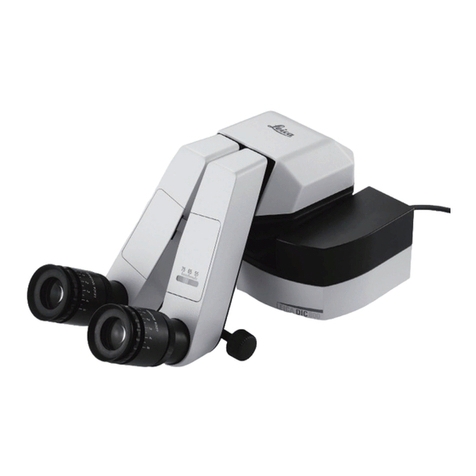
4
TABLE OF CONTENTS
SECTION PAGE
1NOMENCLATURE 6
2SETTING UP THE INSTRUMENT 10
3ASSEMBLING THE MICROSCOPE 10
3.1 Input Voltage............................................................................. 11
3.2 Lamp and Lamp Cover House (Replacing the Lamp) ....................... 11
3.3 Halogen Lamp............................................................................ 11
3.4 Specimen Clip............................................................................ 11
3.5 Attachable Mechanical Stage (Optional) ........................................ 11
3.6 Objectives ................................................................................. 11
3.7 Condenser................................................................................. 12
3.8 Intermediate Tube...................................................................... 12
3.9 Analyser Slider........................................................................... 12
3.10 Compensators............................................................................ 12
3.11 Eyepiece Tube ........................................................................... 12
3.12 Eyepieces.................................................................................. 13
3.13 Filters ....................................................................................... 13
3.14 Power Cord................................................................................ 13
4 MICROSCOPY 14
Manipulation of each Component
4.1. Coarse and Fine Focusing ............................................................ 14
I. Coarse Focus Torque Adjustment ....................................... 14
II. Coarse Focus Height Stopper ............................................. 14
4.2. Binocular Tube........................................................................... 15
I. Diopter Adjustment .......................................................... 15
II. Interpupillary Distance Adjustment..................................... 15
4.3 Condenser................................................................................. 16
I. Focusing And Centering .................................................... 16
II. Condenser Swing-Out Top Lens.......................................... 16
III. Condenser Aperture Diaphragm ......................................... 16
4.4. Field Diaphragm......................................................................... 17
4.5. Orientation of Polarizer and Analyzer ............................................ 17
4.6. Focusing and Centering the Bertrand Lens..................................... 18
4.7. Compensators............................................................................ 19
I. 1/4λ-Plate (E.G. Mica) ...................................................... 19
II. Λ-Plate (E.G. Gypsum)...................................................... 19
III. Quartz Wedge (0-4λ)........................................................ 19
4.8. Centering the Objectives ............................................................. 21
